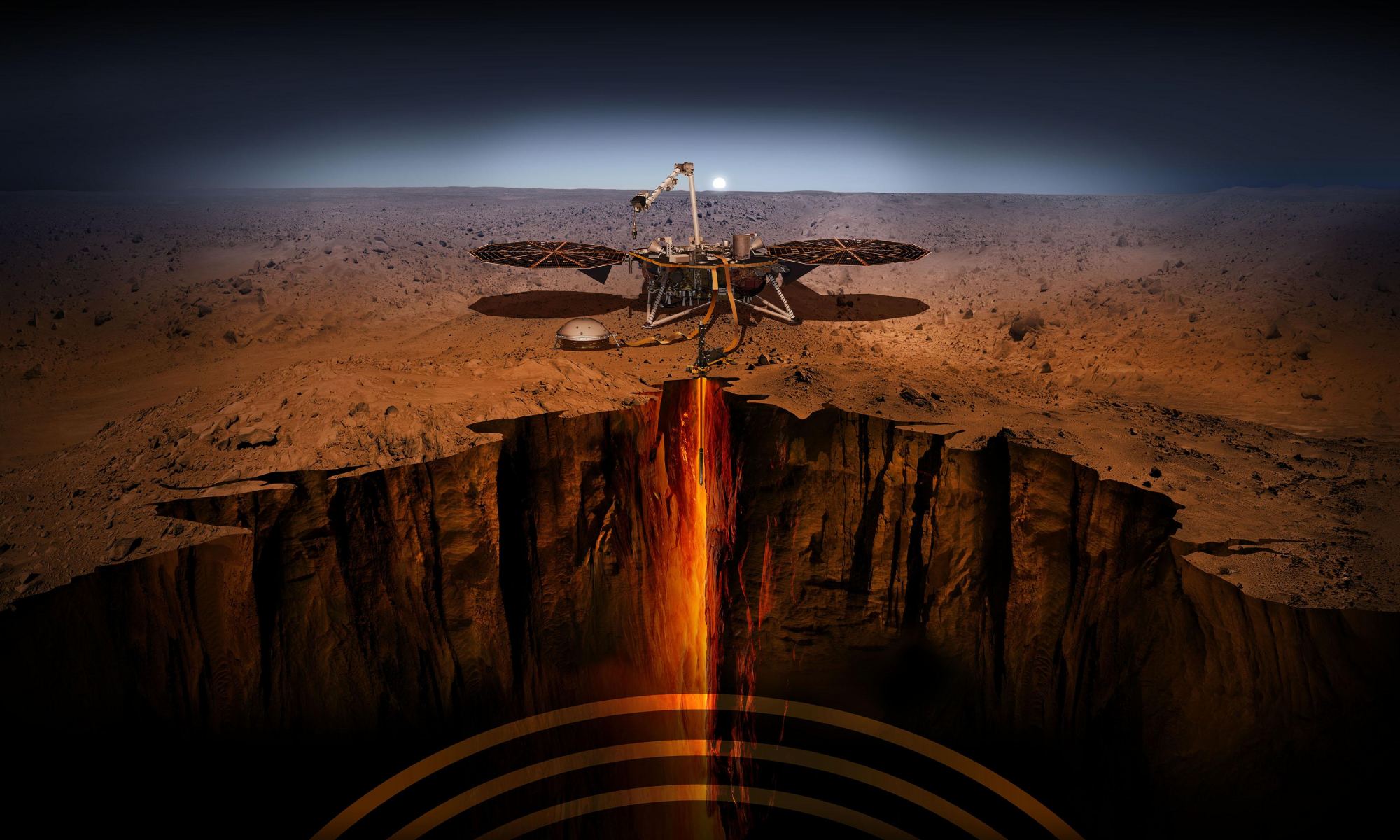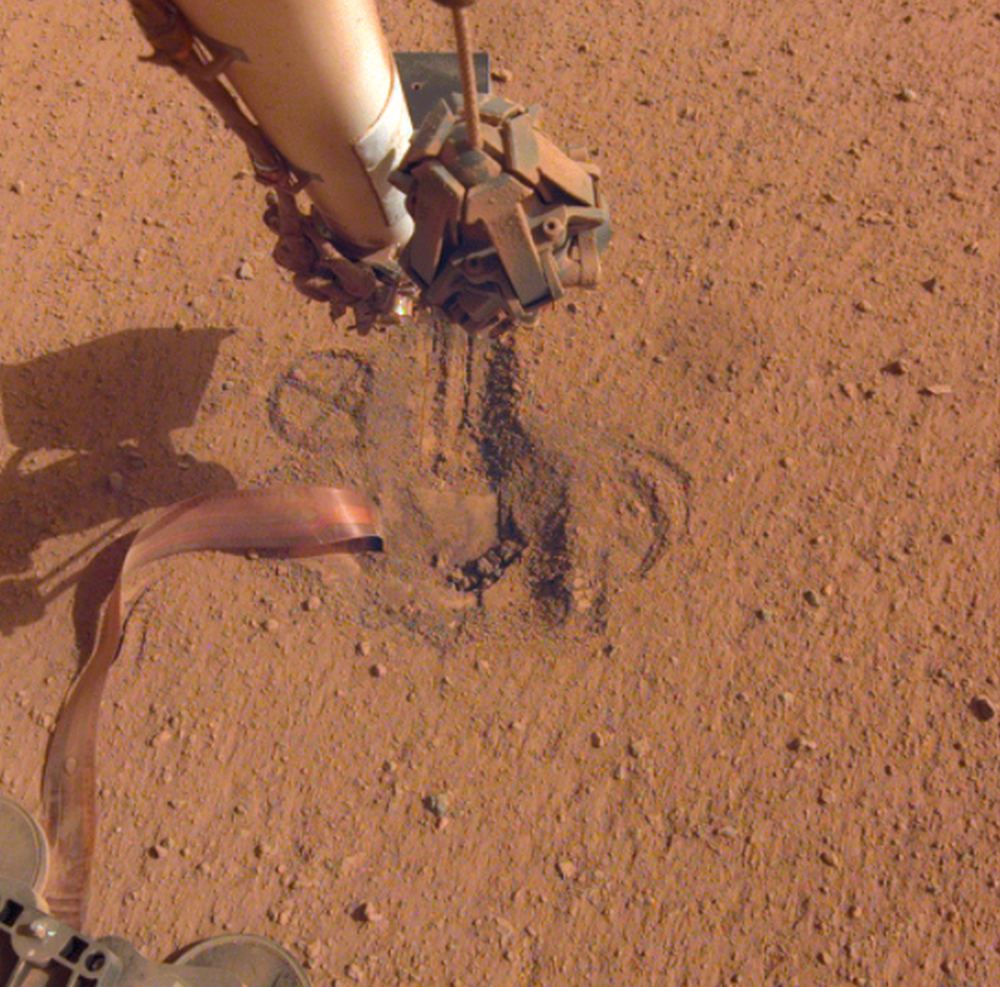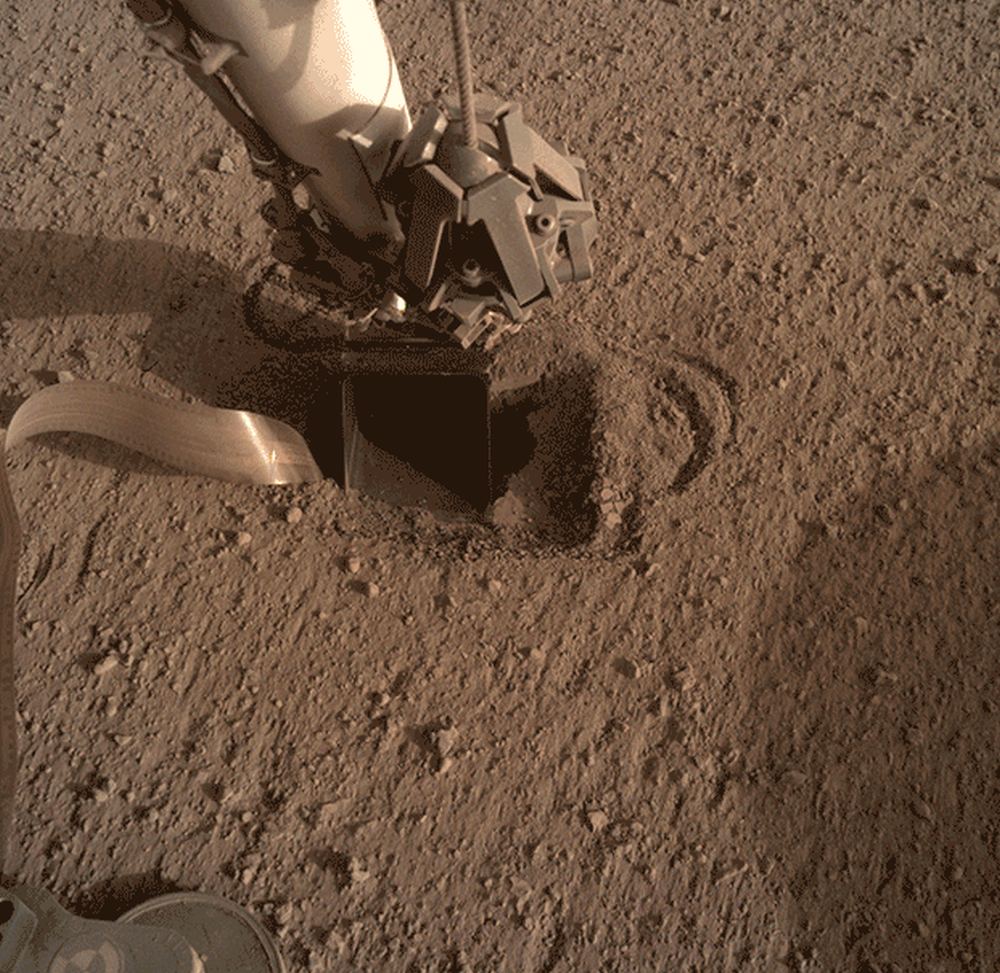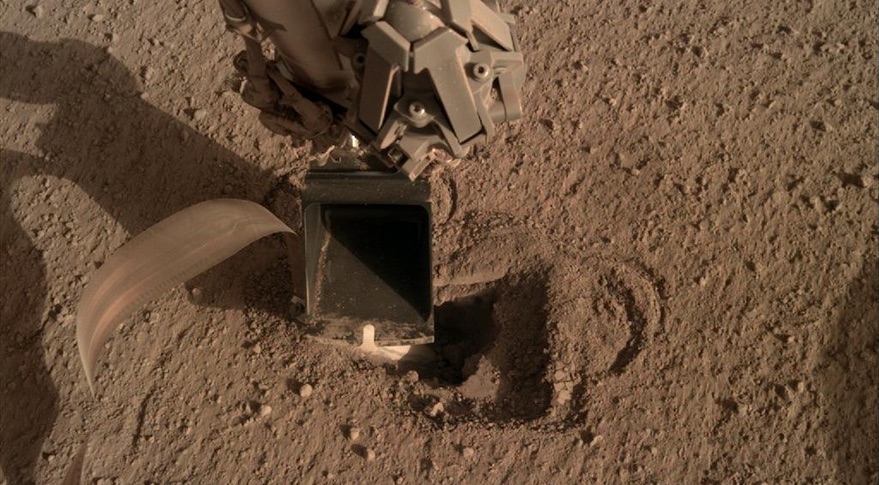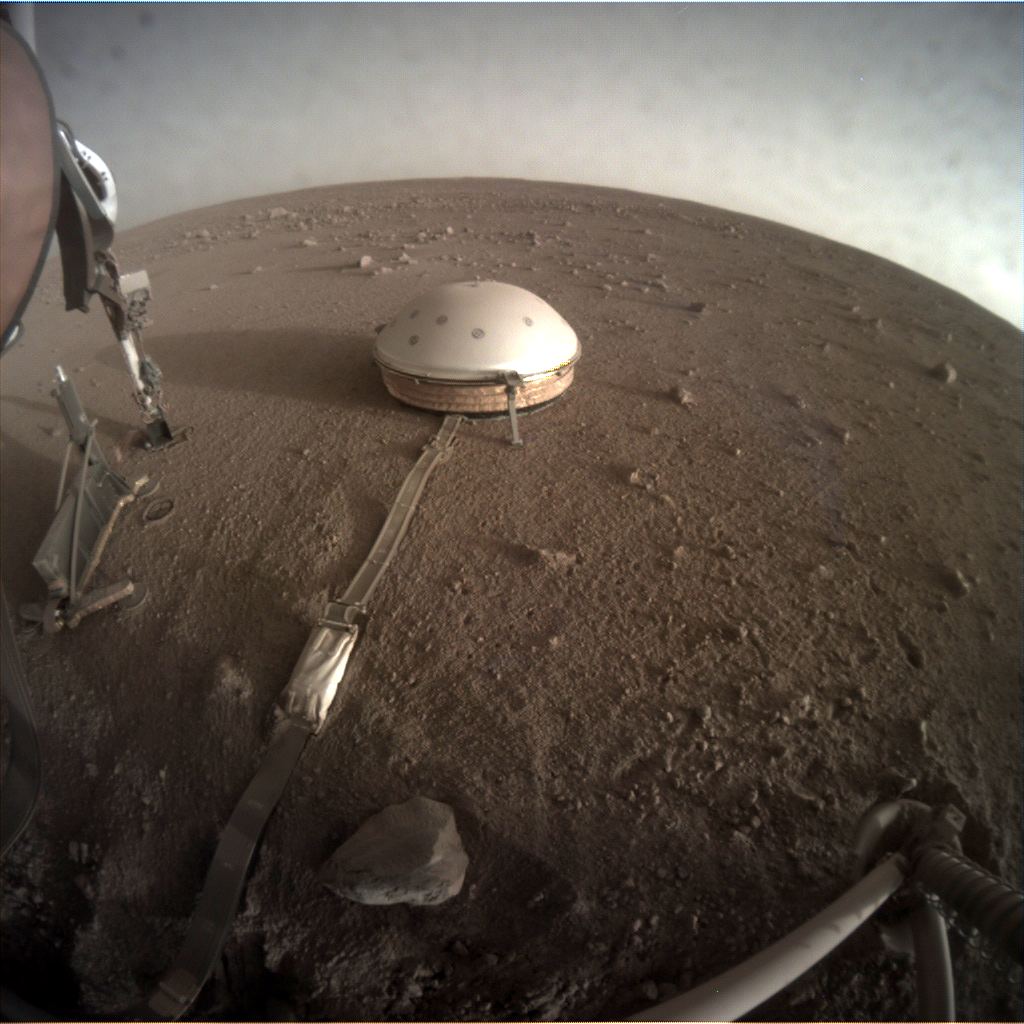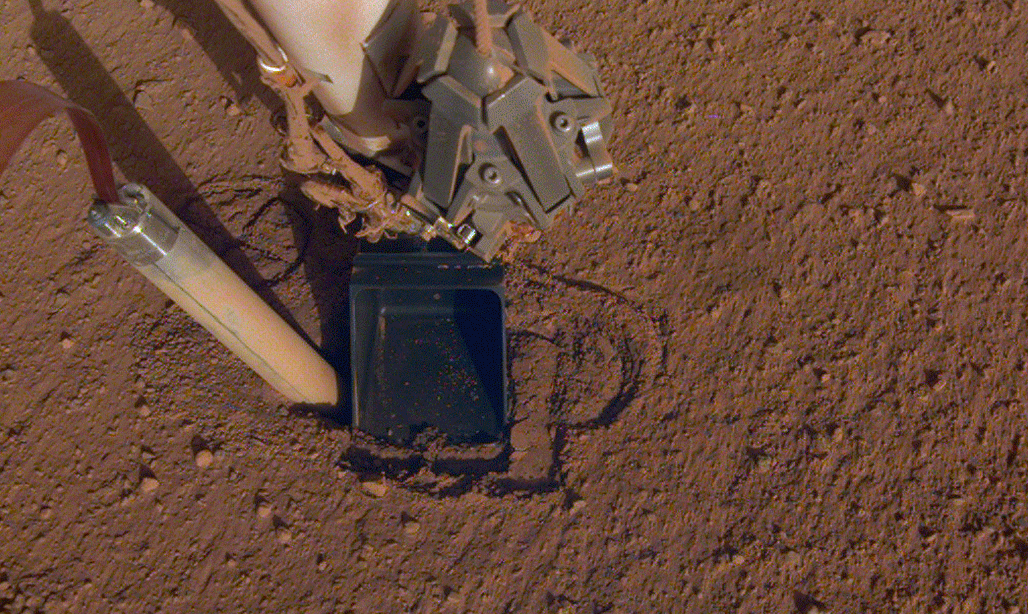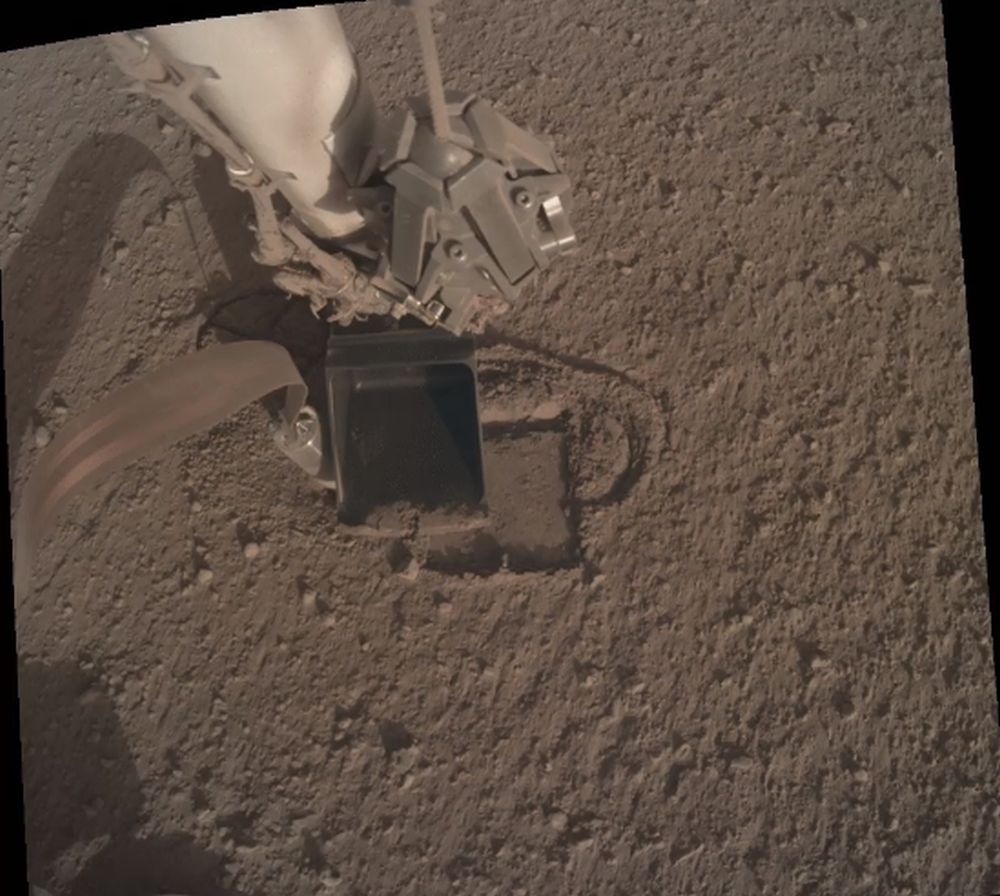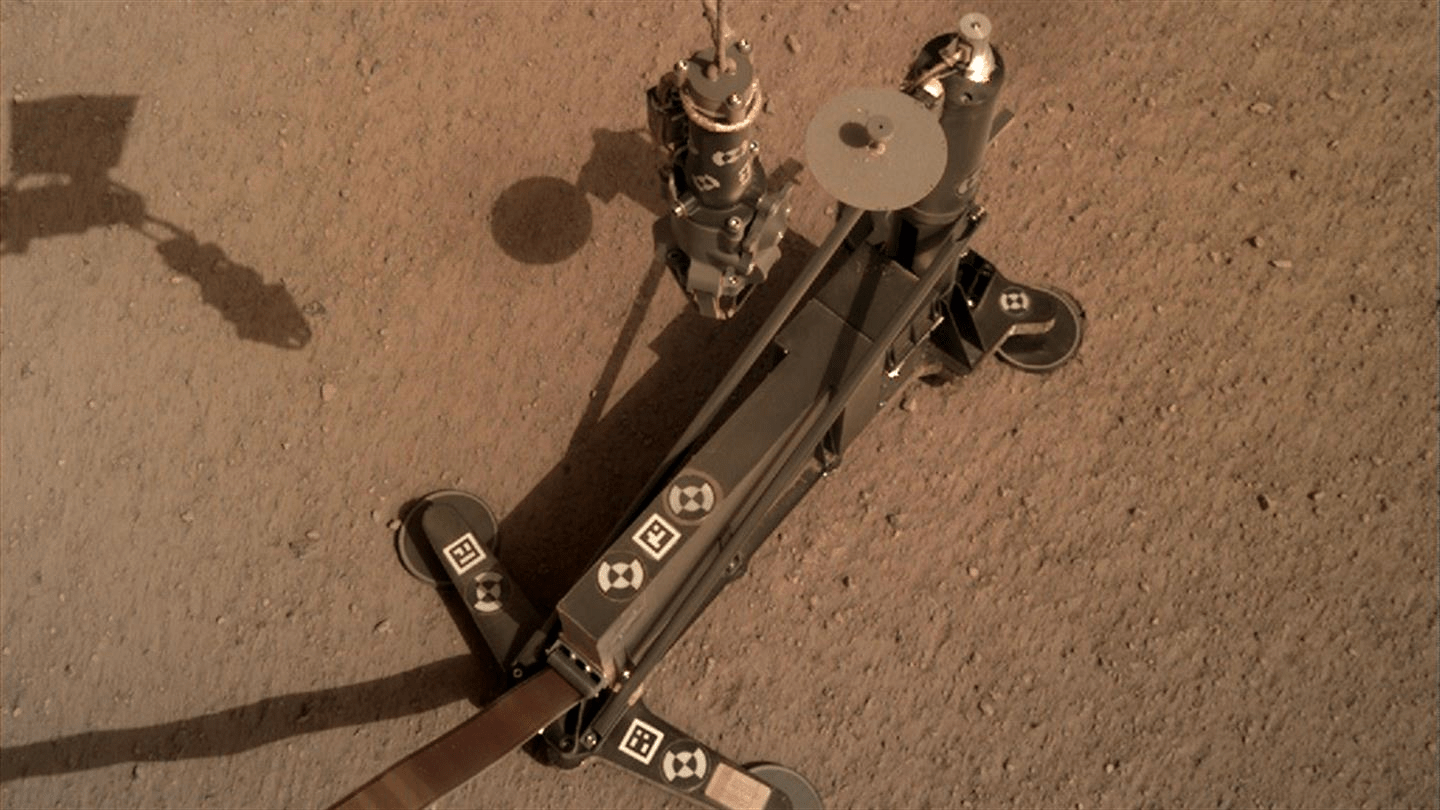On November 26th, 2018, NASA’s Interior Exploration using Seismic Investigations, Geodesy, and Heat Transport (InSight) mission landed on Mars. This was a major milestone in Mars exploration since it was the first time a research station had been deployed to the surface to probe the planet’s interior. One of the most important instruments InSight would use to do this was the Heat Flow and Physical Properties Package (HP3) developed by the German Aerospace Center (DLR). Also known as the Martian Mole, this instrument measured the heat flow from deep inside the planet for four years.
The HP3 was designed to dig up to five meters (~16.5 ft) into the surface to sense heat deeper in Mars’ interior. Unfortunately, the Mole struggled to burrow itself and eventually got just beneath the surface, which was a surprise to scientists. Nevertheless, the Mole gathered considerable data on the daily and seasonal fluctuations below the surface. Analysis of this data by a team from the German Aerospace Center (DLR) has yielded new insight into why Martian soil is so “crusty.” According to their findings, temperatures in the top 40 cm (~16 inches) of the Martian surface lead to the formation of salt films that harden the soil.
Continue reading “Scientists Have Figured out why Martian Soil is so Crusty”
